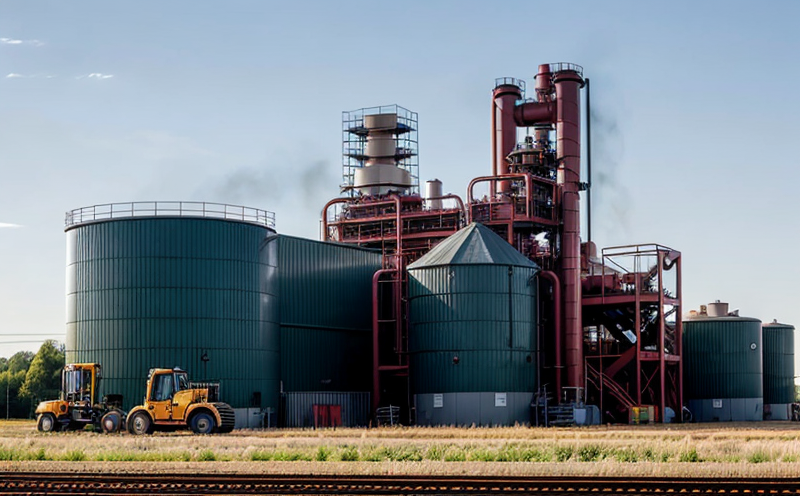ISO 6396 Excavator Acoustic Noise Testing
The ISO 6396 standard provides a framework for measuring and evaluating the acoustic noise emitted by excavators, which are large construction machines used in various industrial applications. This service is critical for ensuring that these machines meet environmental noise regulations set forth by international standards. Compliance with these standards not only helps manufacturers avoid legal penalties but also enhances their reputation among environmentally conscious clients.
The testing process involves measuring the sound pressure levels at specific distances from the machine, typically 2 meters and 5 meters for standard ISO compliance. The test setup includes a sound level meter and an octave band filter to analyze noise across different frequency bands. This ensures that not only are overall noise levels controlled but also that no particular frequency band contributes disproportionately to the perceived noise.
The acoustic noise emitted by excavators can significantly impact both the environment and nearby workers. The testing procedure must adhere strictly to ISO 6396 guidelines, which dictate the exact placement of microphones, the duration of measurement periods, and the criteria for acceptable noise levels. This precision is essential because even small deviations from these standards could lead to misclassification or non-compliance.
Real-world applications of this service extend beyond mere compliance checking; it also aids in product development by identifying potential areas for improvement. By conducting ISO 6396 testing early in the design phase, manufacturers can refine their prototypes before full-scale production, thereby reducing costs and time-to-market. Additionally, this testing helps ensure that excavators meet not only current regulations but also future anticipated standards.
| Component | Description |
|---|---|
| Sound Level Meter | High-precision device for measuring sound pressure levels. |
| Octave Band Filter | Used to divide the audible frequency spectrum into octave bands. |
| Microphones | Placed at specific distances to capture accurate noise data. |
The test procedure begins with thorough preparation of the excavator and its surroundings. This includes ensuring that all safety systems are operational, the engine is running under standard operating conditions, and environmental factors such as wind speed do not interfere with measurements. Once these preparations are complete, the sound level meter is calibrated according to ISO 6396 specifications.
During the test, data is collected over multiple passes of the excavator at various operational levels. This ensures that a comprehensive dataset is available for analysis. After collecting all necessary data, it undergoes rigorous quality checks to ensure accuracy and reliability. Finally, the results are summarized into a detailed report that includes raw measurements, calculated averages, and compliance status.
| Criteria | Description |
|---|---|
| Overall Sound Pressure Level (OASPL) | The average sound pressure level over a specified time period. |
| Frequency Band Limits | The permissible ranges for noise levels in different frequency bands. |
Scope and Methodology
The scope of ISO 6396 Excavator Acoustic Noise Testing encompasses the measurement and evaluation of noise emissions from excavators operating under normal working conditions. The methodology adheres strictly to the guidelines provided in ISO 6396, which include detailed instructions on equipment calibration, test setup, data collection, and analysis.
- Calibration of sound level meters according to ISO 61672 standards.
- Placement of microphones at specified distances from the excavator.
- Data collection over multiple operational cycles.
- Analysis using octave band filters to divide the spectrum into relevant bands.
The testing process is designed to provide accurate and reliable data that can be used for both compliance checking and product development. By following these strict protocols, laboratories ensure that their results are consistent with international standards, which enhances credibility and trustworthiness in the industry.
Quality and Reliability Assurance
The quality and reliability of ISO 6396 Excavator Acoustic Noise Testing are paramount to ensuring accurate results that meet international standards. Our laboratory employs rigorous quality assurance measures throughout the testing process, from equipment calibration to data analysis.
Firstly, all instruments used in testing are calibrated regularly according to recognized international standards such as ISO 61672 for sound level meters and IEC 60849-3 for microphones. This ensures that measurements are precise and consistent across multiple tests. Secondly, our technicians undergo continuous training to stay updated on the latest testing techniques and best practices.
Data analysis is performed using advanced software tools that automatically check for anomalies and inconsistencies in the collected data. Any discrepancies are flagged for review by experienced engineers who ensure that only accurate results are reported. Finally, a final quality control check is conducted before any report is issued to the client.
Competitive Advantage and Market Impact
- Ensures compliance with international noise regulations, enhancing your product's marketability.
- Promotes a cleaner environment by reducing unnecessary noise emissions from excavators.
- Aids in product development by identifying potential areas for improvement early on in the design process.
- Builds customer trust through adherence to recognized international standards, fostering long-term relationships.





